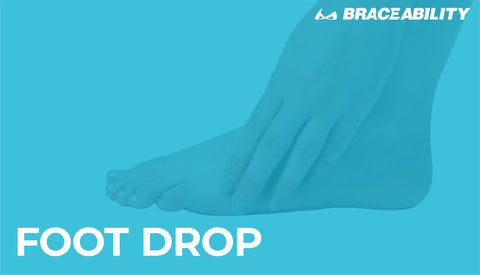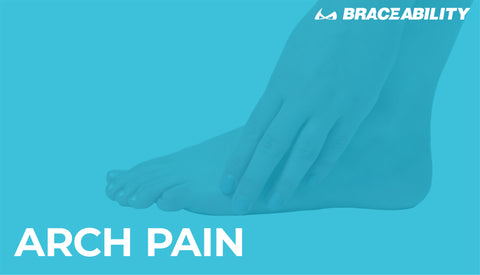Bone Spurs on Top of Foot: Causes, Symptoms, and Treatments
From Pain to Relief: Navigating Bone Spurs on the Top of Your Foot
Bone Spur on Top of Foot Overview
We use our feet to walk every day; it’s the first thing we do when we get up and the last thing we do before we go to bed. However, what happens when a painful bone spur develops on the top of your foot? What causes bone spurs on top of the foot, and more importantly, how do you treat them?
Bone spurs, also called osteophytes, are smooth and bony growths that most often occur near joints. Osteophytes on top of the foot develop over time in patients who suffer from joint damage or arthritis. In some cases, bone spurs don’t cause symptoms. When symptoms do occur, bone spurs can cause dull pain, numbness, weakness, or stiffness.

Why Do Bone Spurs Develop on Top of Feet?
Bone spurs are often caused by joint damage from degenerative diseases or health issues, such as osteoarthritis or tendonitis. When these conditions break down the cartilage that cushions the ends of bones, the body tries to repair the damage by creating new bone material. Swelling from the damage can stimulate cells that form bone, which can eventually grow into a bone spur.
The body’s weight is pushed down and through the cartilage on the top of the foot with every step. Increased stress on cartilage leads to damage, which can cause osteoarthritis, creating a loop that eventually causes the body to attempt to repair itself by creating new bone material. If this process goes awry, bone spurs can be created on the top of the foot.
The 7 Most Common Bone Spur Symptoms
-
Pain From Bone Spur
The most common symptom is pain, which can vary in intensity. This pain is often described as sharp or a dull ache and is typically exacerbated by activities such as walking, running, or standing for prolonged periods. Wearing tight or ill-fitting shoes can increase the pressure on the bone spur, leading to heightened discomfort. The pain might be persistent, occurring even at rest, or it might only appear during specific activities.
-
Swelling Around the Bone Spur
Inflammation is a natural response to irritation or injury. In the case of a bone spur, the surrounding tissues may become inflamed, leading to noticeable swelling. This swelling can cause the skin over the affected area to appear red and puffy. The inflammation may also lead to a feeling of warmth around the spur. Swelling can fluctuate, often worsening after activity and subsiding with rest.
-
Foot Stiffness Resulting From Bone Spur
A bone spur can limit the range of motion in the foot or toes. This stiffness can make it difficult to perform everyday movements, such as bending or flexing the foot. The stiffness may be more pronounced in the morning or after periods of inactivity, gradually loosening up as the day progresses. This restriction in movement can impact gait (walking pattern) and overall mobility.
-
Foot Tenderness
The top of the foot may become tender to the touch due to the presence of a bone spur. This tenderness can be exacerbated by wearing shoes that put pressure on the affected area. Even light touch or minor pressure can cause significant discomfort, making it challenging to find comfortable footwear or to engage in regular activities.
-
Numbness or Tingling in Feet
If a bone spur presses against nearby nerves, it can disrupt normal nerve function. This compression can lead to sensations of numbness, tingling, or a "pins and needles" feeling in the foot. These sensations can be intermittent or constant and might affect the entire foot or just specific areas. In severe cases, nerve compression can lead to more significant sensory deficits or muscle weakness.
-
Visible Bump
A bone spur may cause a noticeable bony bump on the top of the foot. This bump can sometimes be seen under the skin or felt when touched. The size of the bump can vary, and its visibility may depend on the severity of the spur and the amount of swelling present. This protrusion can make the foot appear misshapen and may contribute to difficulties in finding well-fitting shoes.
-
Calluses or Corns
The friction and pressure caused by a bone spur can lead to the formation of calluses or corns on the skin over the affected area. These are thickened layers of skin that develop as a protective response to repeated rubbing or irritation. Calluses are generally larger and more diffuse, while corns are smaller and more concentrated. Both can be painful and may require special foot care or adjustments in footwear to manage.
Top Methods for Treating Bone Spurs on the Foot
Treating a bone spur on the top of the foot involves a combination of conservative measures and, in some cases, medical interventions. The approach depends on the severity of the symptoms and the underlying cause of the bone spur. Here are some effective treatment options:
Treatments for Bone Spurs on Feet
Activity Modification
Reducing activities that exacerbate symptoms, such as prolonged walking, running, or standing, can help alleviate pain and prevent further irritation of the bone spur.
Footwear Adjustments
Wearing shoes with a wide toe box and good arch support can reduce pressure on the bone spur. Footwear inserts help alleviate the pain and friction caused by bone spurs, allowing you to get back to doing what you love. These inserts can correct abnormal gait patterns, provide arch support, and redistribute pressure away from the bone spur, significantly reducing pain and discomfort.

R.I.C.E. Method
Resting the affected area takes some of the stress off it, reducing pain. Applying ice to the affected area can help reduce inflammation and numb the pain. Ice packs should be used for 15-20 minutes several times a day, especially after activities that increase pain. Compressing and elevating the area reduces the blood flow to the area, promoting healing.
Over-the-Counter Pain Relievers
Non-steroidal anti-inflammatory drugs (NSAIDs) such as ibuprofen or naproxen can help reduce pain and inflammation. These medications should be used as directed by a healthcare professional.
Physical Therapy
Engaging in specific exercises and stretches can improve foot flexibility, strengthen the muscles around the joint, and reduce stiffness. A physical therapist can design a tailored program to address individual needs.
How to Prevent Bone Spurs on Foot
Maintain a Healthy Weight
Excess body weight can increase pressure on the feet, exacerbating bone spur symptoms. Maintaining a healthy weight through diet and exercise can reduce this pressure and prevent further joint damage.
Regular Foot Care
Keeping the feet clean, moisturized, and properly supported can help prevent the development of calluses and corns, which can worsen bone spur symptoms. Regular check-ups with a podiatrist can ensure early detection and management of foot issues.
Manage Underlying Conditions
Addressing and managing conditions such as osteoarthritis or tendonitis through appropriate medical treatment can help prevent the formation of bone spurs. Following a healthcare provider’s recommendations for managing these conditions is essential.
By following these treatment strategies and preventive measures, individuals can effectively manage the symptoms of a bone spur on the top of the foot and improve their overall foot health.
Regaining Mobility and Comfort: Effective Management and Prevention of Bone Spurs on the Top of the Foot
Bone spurs on the top of the foot can be a painful and disruptive condition, impacting daily activities and overall quality of life. These bony growths, often caused by joint damage from degenerative diseases like osteoarthritis or tendonitis, can lead to symptoms such as pain, swelling, stiffness, tenderness, numbness, and visible bumps. The key to managing these symptoms lies in a combination of effective treatment strategies and preventive measures.
Conservative treatments, such as activity modification, footwear adjustments, the R.I.C.E. method (Rest, Ice, Compression, Elevation), over-the-counter pain relievers, and physical therapy, can significantly reduce discomfort and improve foot function. Custom orthotic inserts and proper footwear can provide the necessary support and cushioning to alleviate pain and prevent further irritation of the bone spur.
Preventive measures, including maintaining a healthy weight, regular foot care, and managing underlying conditions, are essential for long-term foot health. By addressing the root causes and following a comprehensive treatment plan, individuals can effectively manage bone spur symptoms and enhance their overall well-being.
In conclusion, understanding the causes, symptoms, and treatment options for bone spurs on the top of the foot empowers individuals to take proactive steps toward relief and recovery. With the right approach, it is possible to reduce pain, improve mobility, and maintain healthy, functional feet.
``` ### Key Fixes: - Properly closed the nested `- ` tags.
- Added missing `
` tags around paragraphs inside list items. - Improved readability and corrected minor grammar issues.










